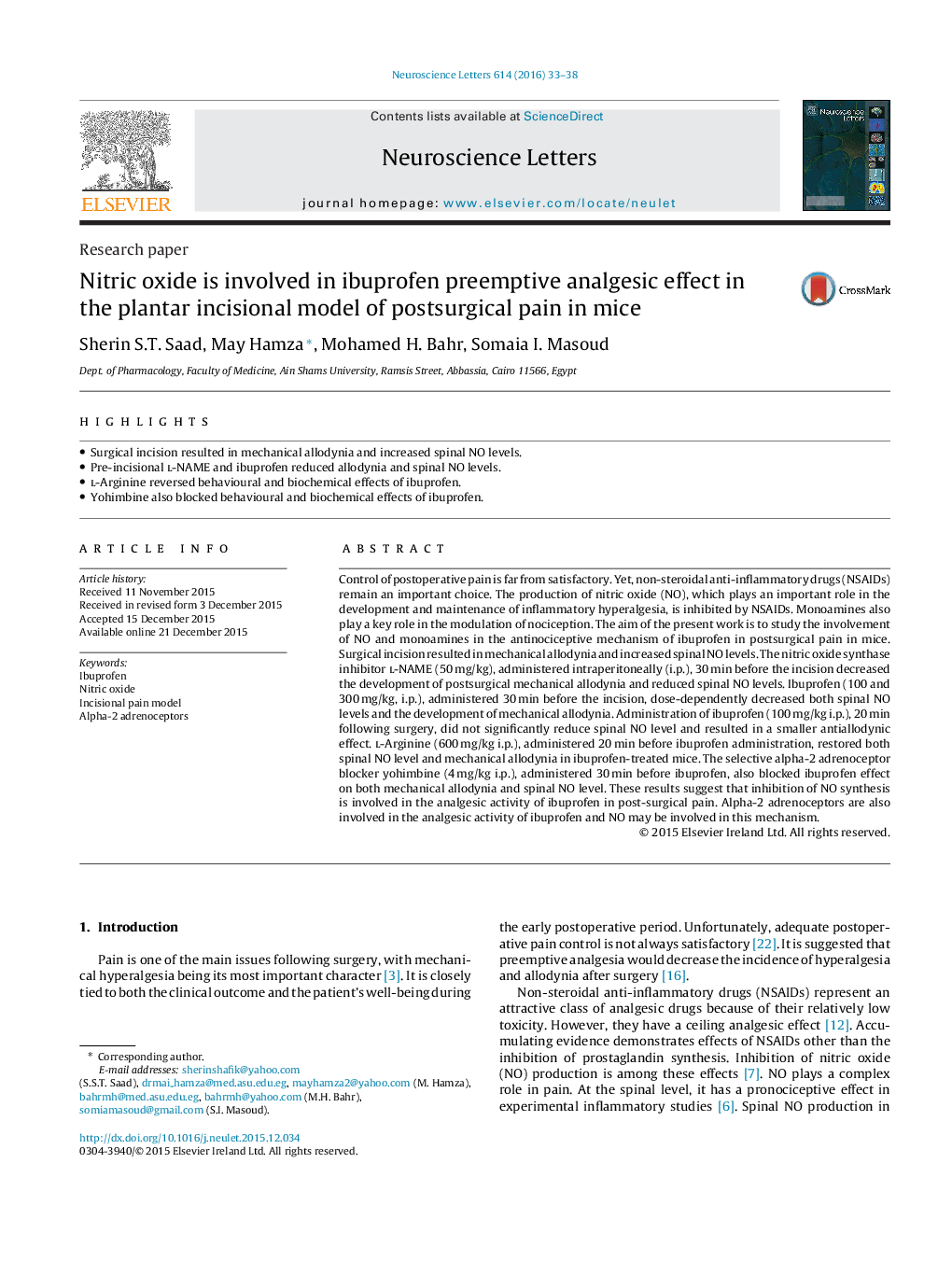| Article ID | Journal | Published Year | Pages | File Type |
|---|---|---|---|---|
| 6280145 | Neuroscience Letters | 2016 | 6 Pages |
Abstract
Control of postoperative pain is far from satisfactory. Yet, non-steroidal anti-inflammatory drugs (NSAIDs) remain an important choice. The production of nitric oxide (NO), which plays an important role in the development and maintenance of inflammatory hyperalgesia, is inhibited by NSAIDs. Monoamines also play a key role in the modulation of nociception. The aim of the present work is to study the involvement of NO and monoamines in the antinociceptive mechanism of ibuprofen in postsurgical pain in mice. Surgical incision resulted in mechanical allodynia and increased spinal NO levels. The nitric oxide synthase inhibitor l-NAME (50Â mg/kg), administered intraperitoneally (i.p.), 30Â min before the incision decreased the development of postsurgical mechanical allodynia and reduced spinal NO levels. Ibuprofen (100 and 300Â mg/kg, i.p.), administered 30Â min before the incision, dose-dependently decreased both spinal NO levels and the development of mechanical allodynia. Administration of ibuprofen (100Â mg/kg i.p.), 20Â min following surgery, did not significantly reduce spinal NO level and resulted in a smaller antiallodynic effect. l-Arginine (600Â mg/kg i.p.), administered 20Â min before ibuprofen administration, restored both spinal NO level and mechanical allodynia in ibuprofen-treated mice. The selective alpha-2 adrenoceptor blocker yohimbine (4Â mg/kg i.p.), administered 30Â min before ibuprofen, also blocked ibuprofen effect on both mechanical allodynia and spinal NO level. These results suggest that inhibition of NO synthesis is involved in the analgesic activity of ibuprofen in post-surgical pain. Alpha-2 adrenoceptors are also involved in the analgesic activity of ibuprofen and NO may be involved in this mechanism.
Related Topics
Life Sciences
Neuroscience
Neuroscience (General)
Authors
Sherin S.T. Saad, May Hamza, Mohamed H. Bahr, Somaia I. Masoud,
